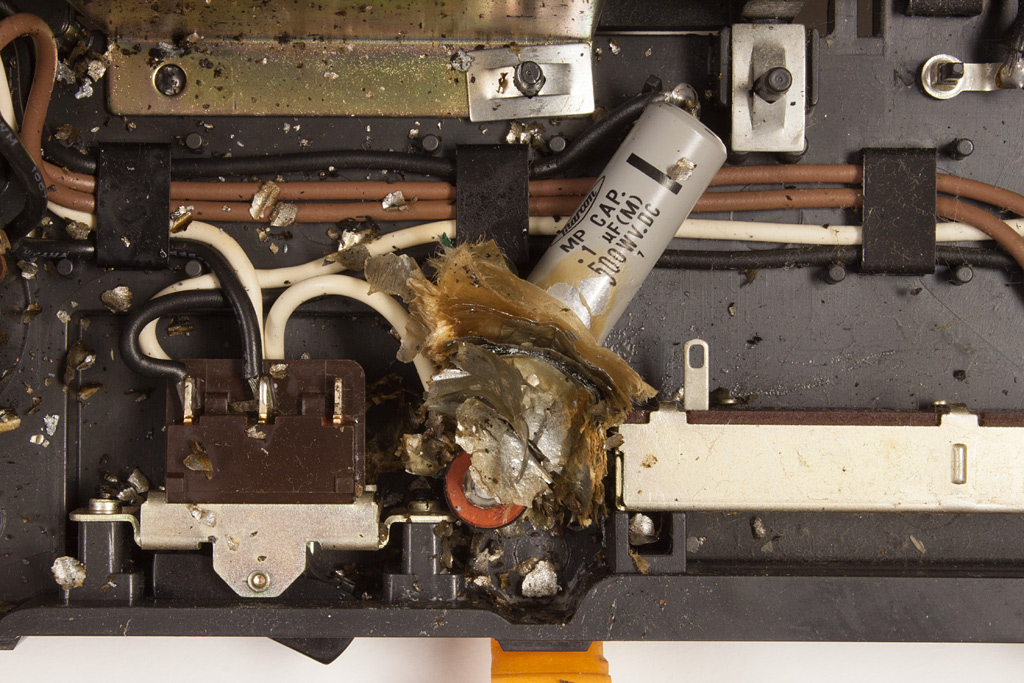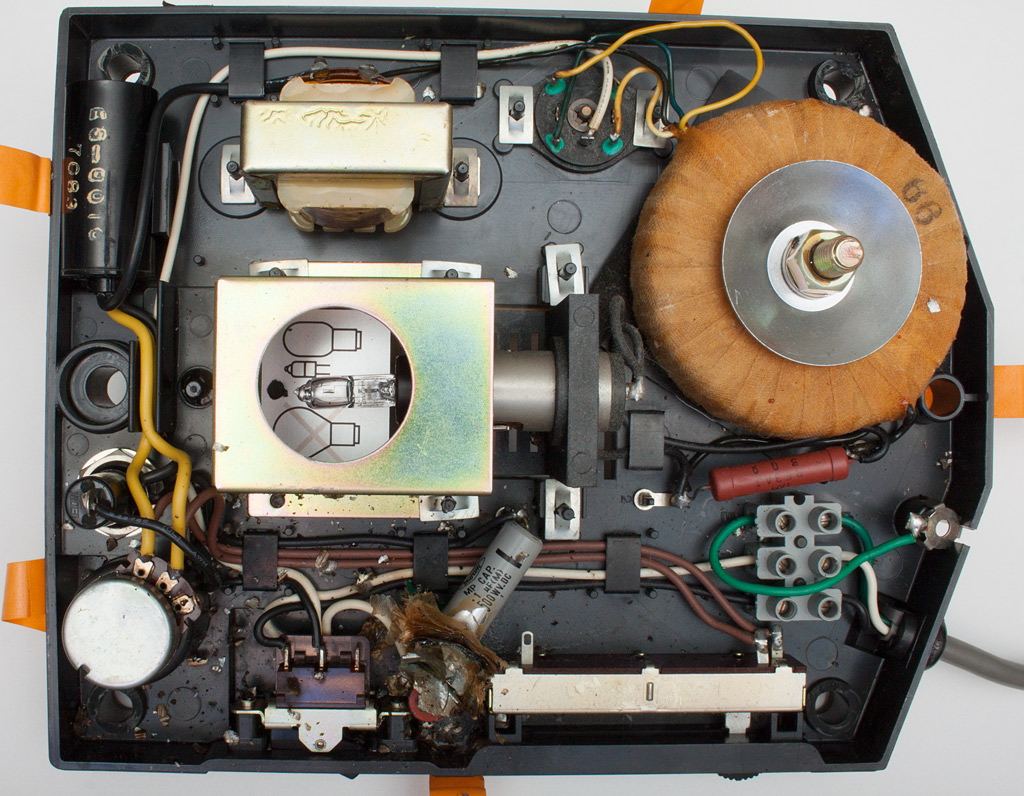It was an Olympus CH, and mostly I wanted it for the focusing mechanism. The eBay ad said that the light didn't work. When the scope came it was clear that the base had experienced some sort of trauma, because all the mounting lugs had been broken off the baseplate and the thing was held together with orange plastic tape. Nonetheless the focusing mechanism worked fine and the condenser and objective turret were in good shape. Oddly, the light also worked fine. I figured the auction place just didn't know to work the brightness slider along with flipping the power switch.
Anyway, I've been using the scope for several years for a variety of purposes, for example as shown here in my Bellows on scope base thread from clear back in 2010.

Until recently, I never got around to taking the baseplate off.
When I finally did, this is what I saw:

OK, fine, so an electrolytic capacitor exploded. They fail that way once in a while, though in my experience it's pretty rare.
On closer consideration, though, I noticed something rather odd. This particular electrolytic capacitor, 0.1 microfarad at 500 WVDC, seems to have been wired essentially straight across the AC mains. Of course that's a recipe for disaster, since DC electrolytic capacitors tend to turn into short circuits if they're ever subjected to reversed voltage.
So now I have this vision of a botched repair, in which some slightly distracted repair person grabs the wrong type of capacitor to replace a failed one, solders it in, puts the scope back together, turns it on, and very shortly afterward experiences something rather like a firecracker going off inside the scope. "Hello, eBay? I have something to sell..."
But it's just a vision, and sometimes imagination fails me. Perhaps some other component has failed too, causing AC to be present in a place where there is supposed to be only DC.
For what it's worth, here's the overview. The base is just labeled CH, with serial number 309978; the arm says CHA.

Can somebody with a working scope tell me what sort of component is supposed to be in that position, and maybe provide a schematic?
--Rik


